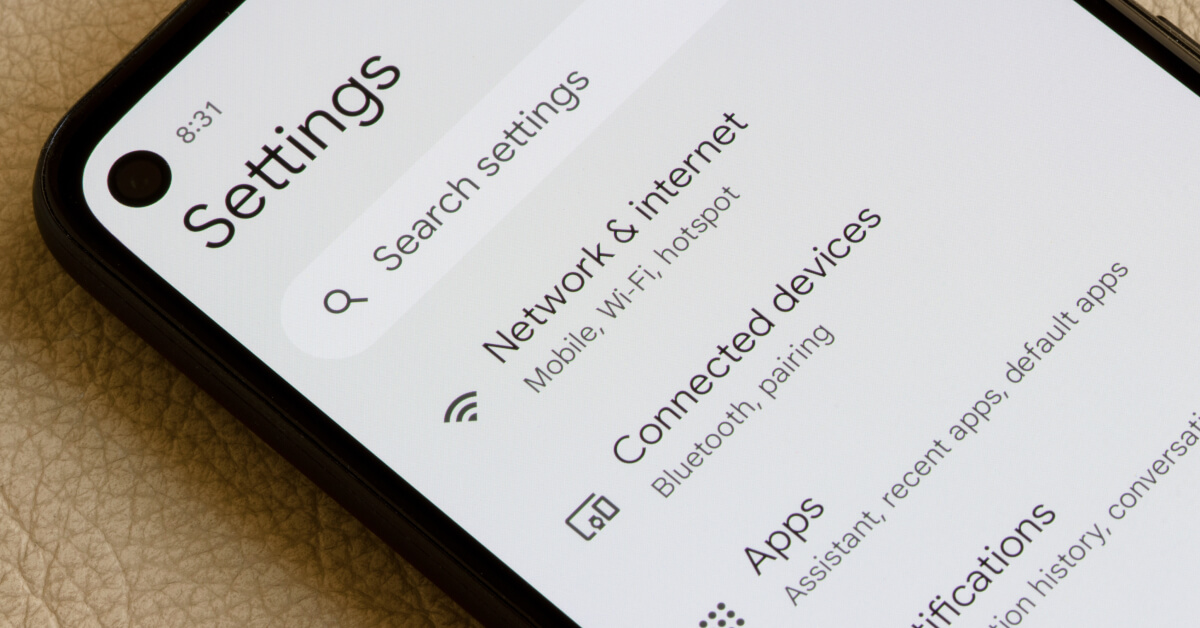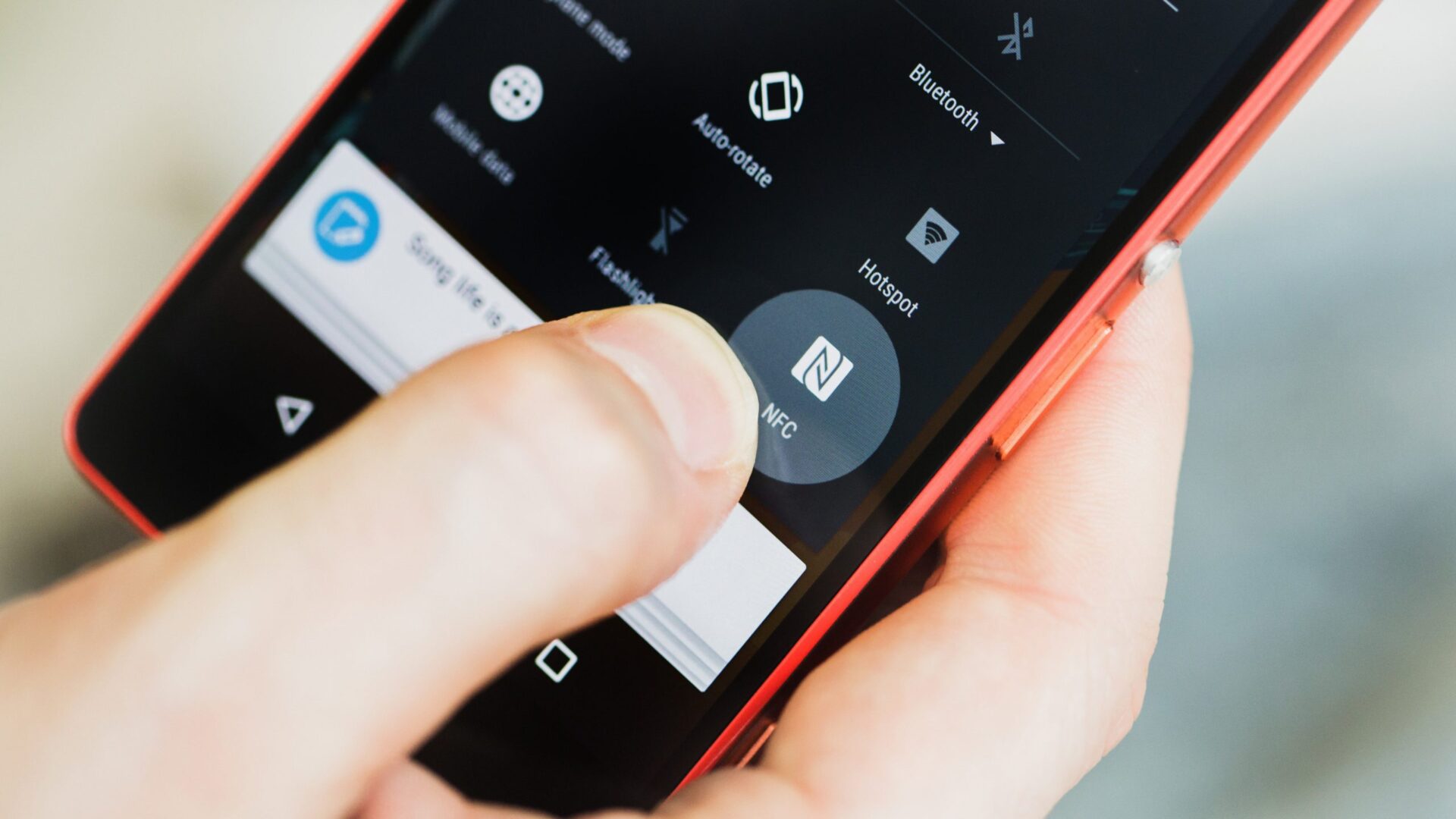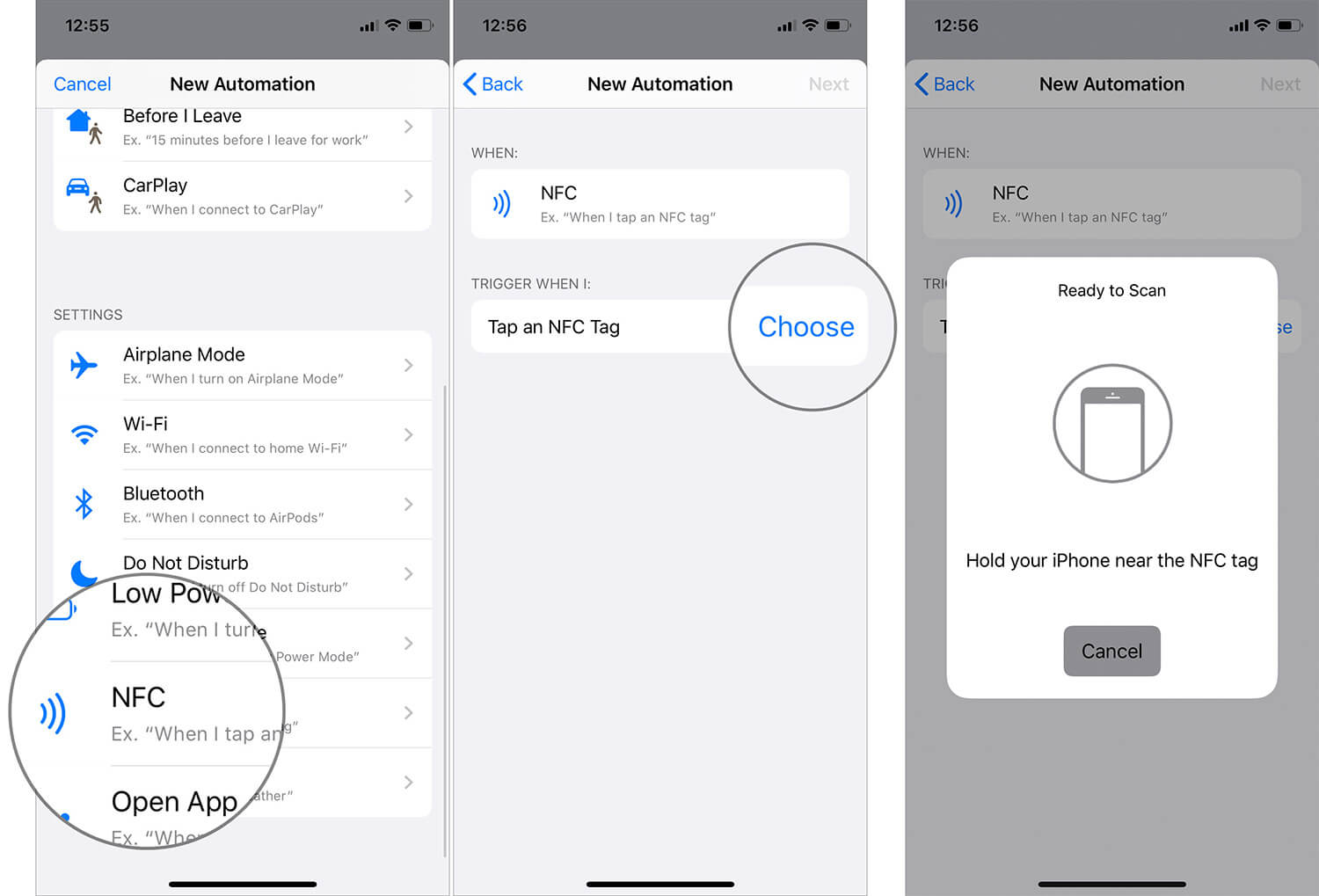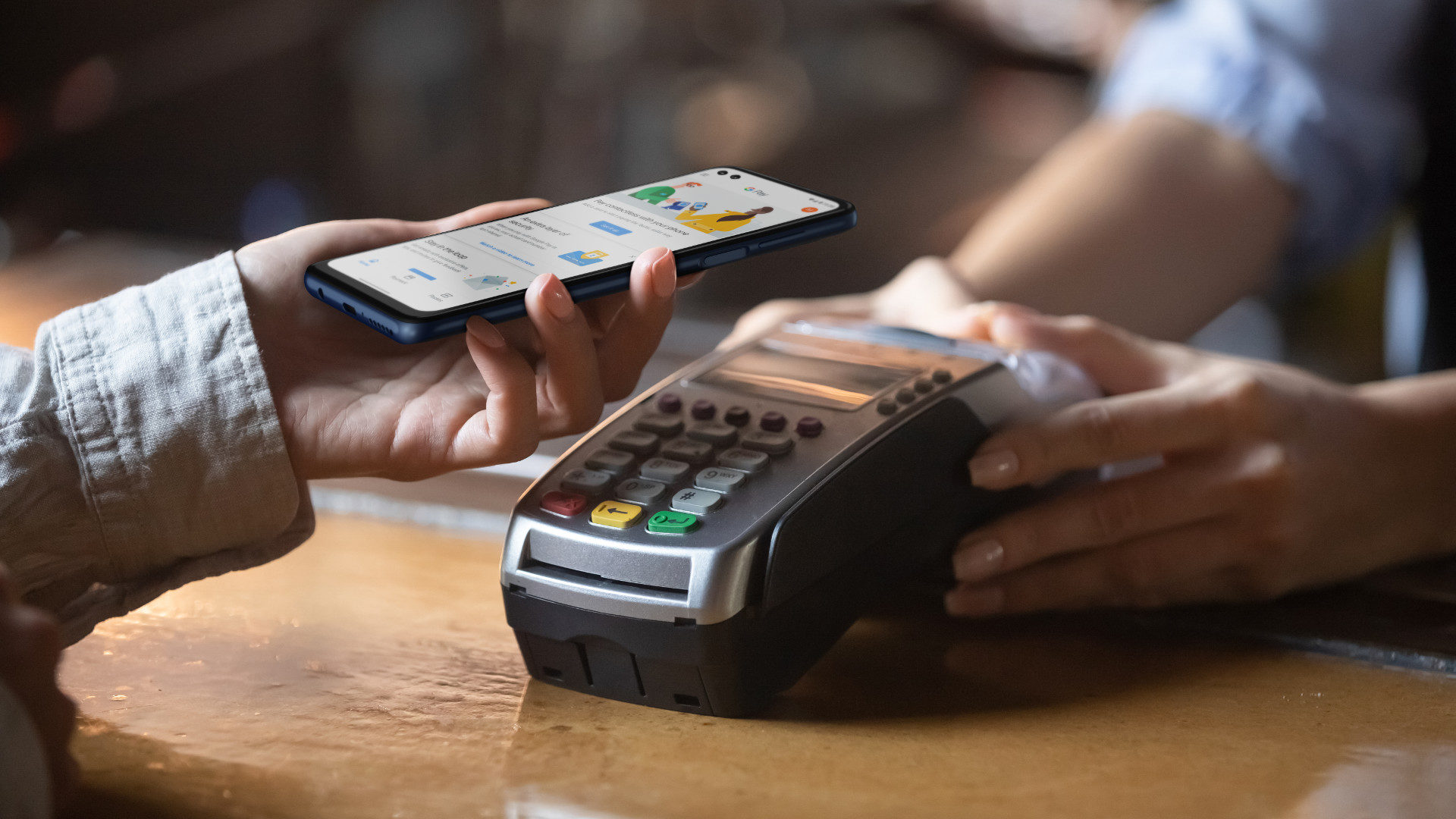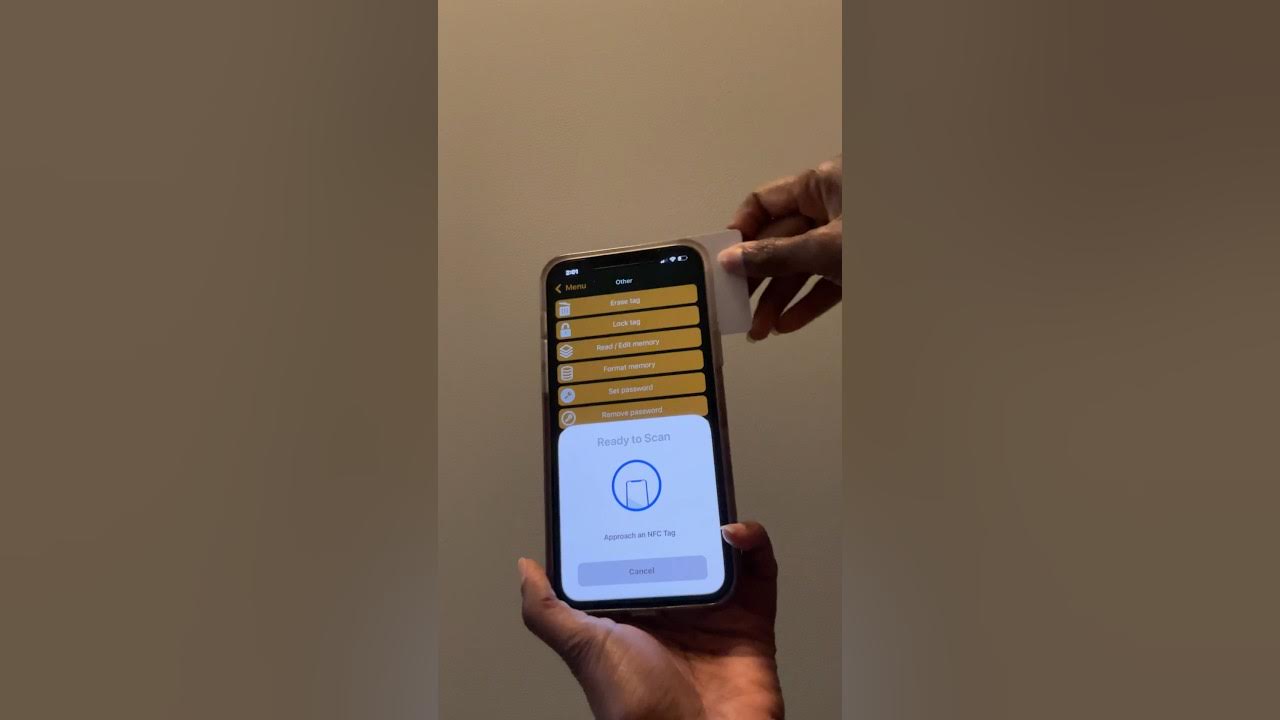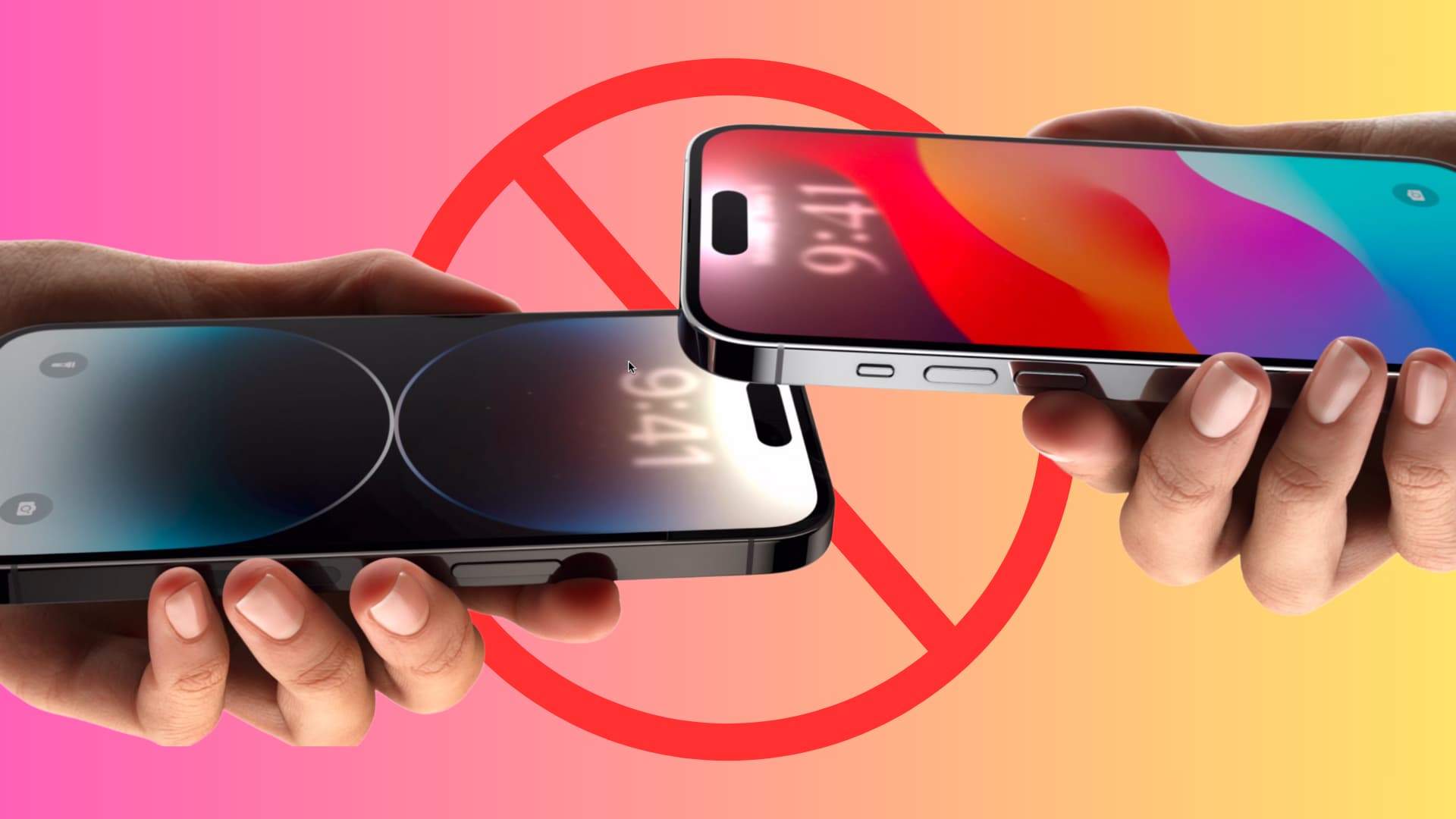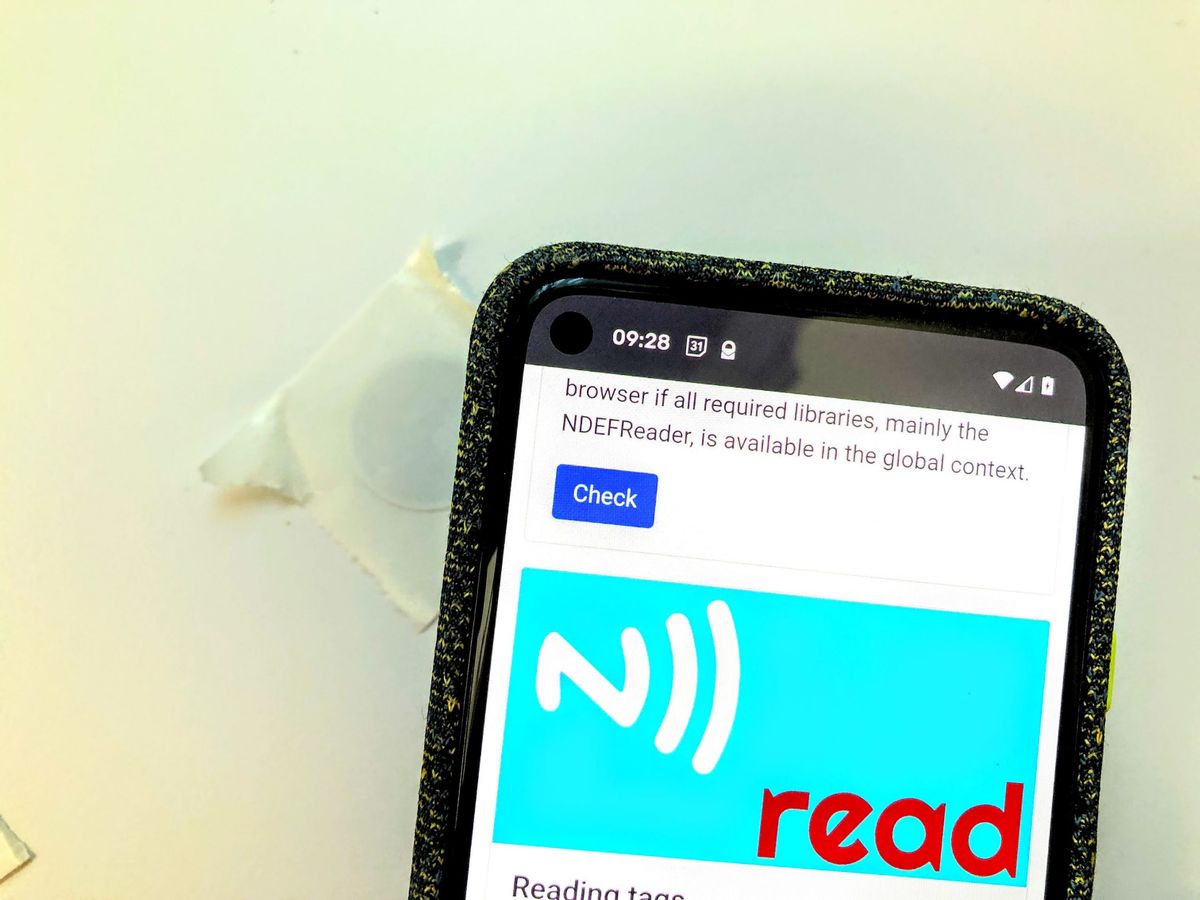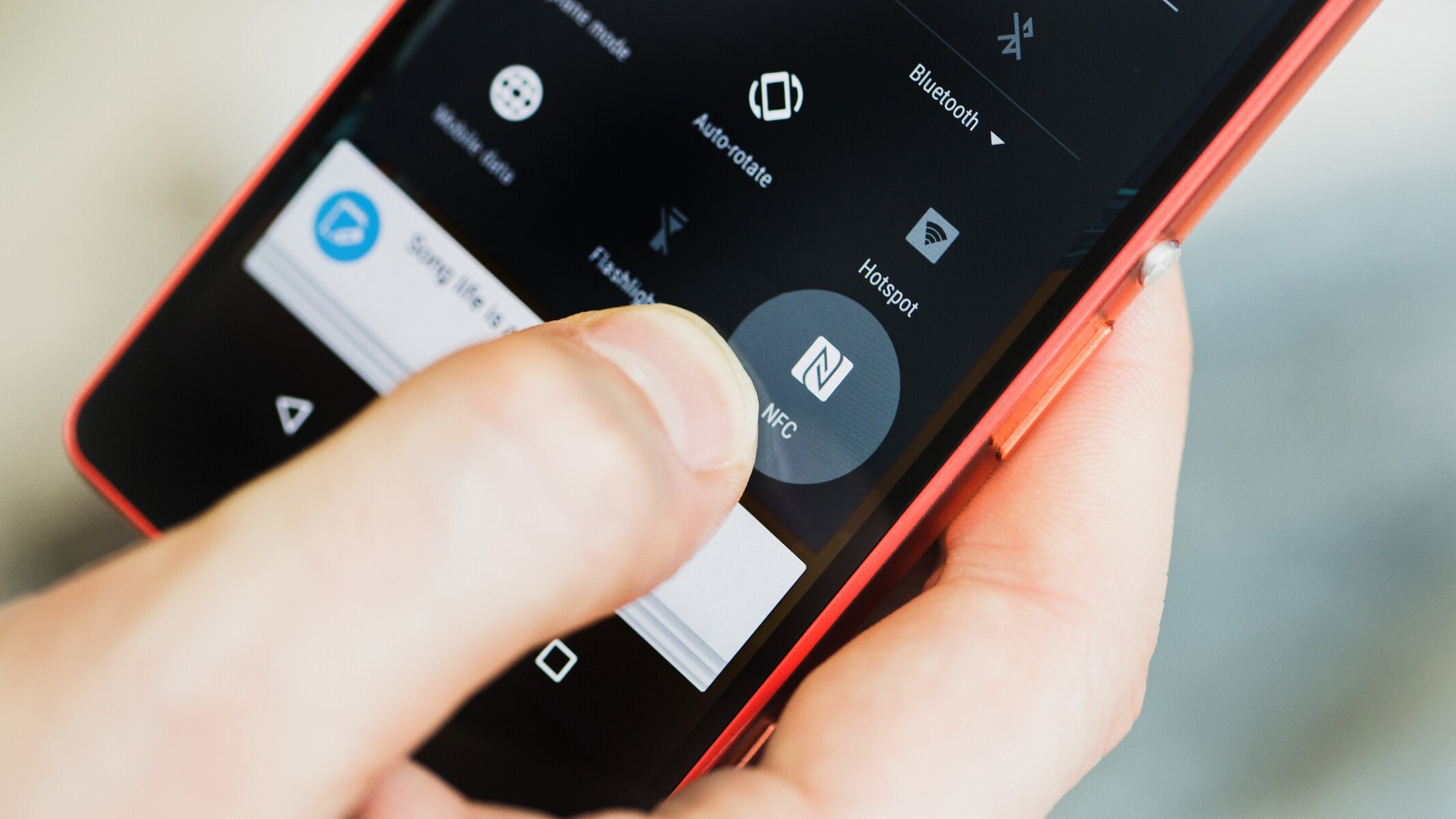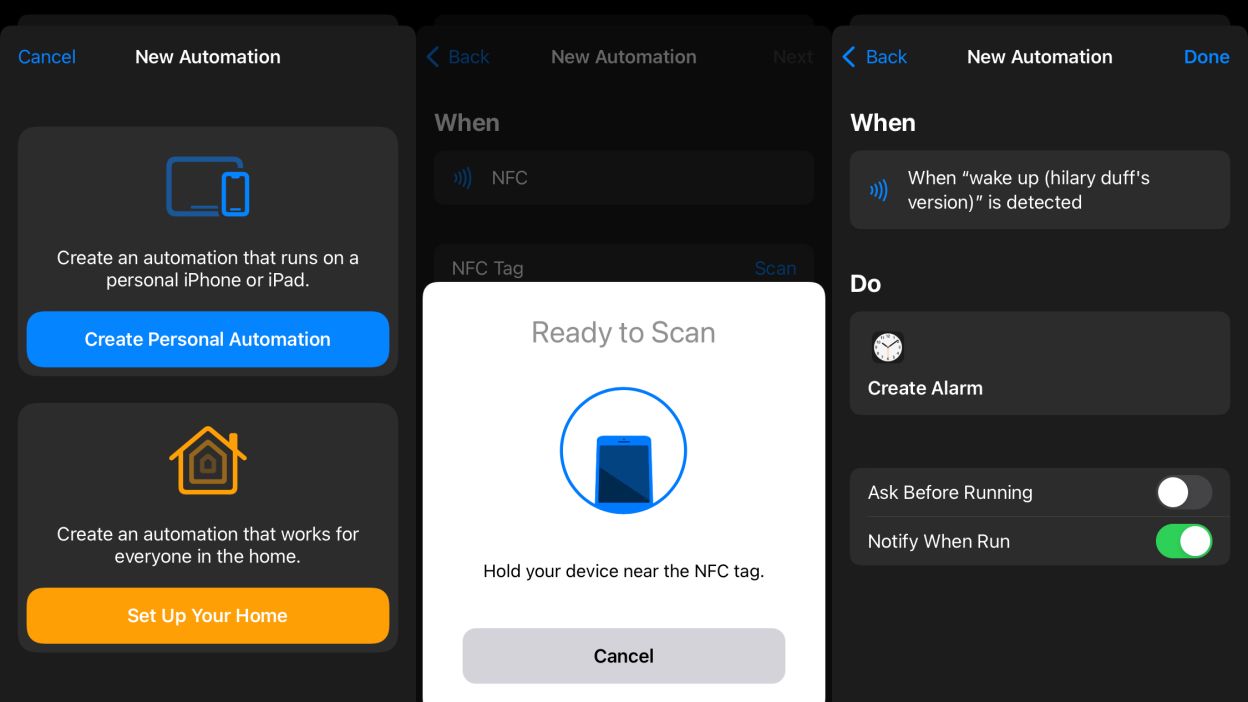Introduction
Welcome to the world of Near Field Communication (NFC) – a technology that enables seamless communication between devices with just a simple tap. In this digital age, our smartphones have become an indispensable part of our lives, serving as our personal assistants, entertainment hubs, and communication tools. NFC is a feature that is gaining popularity in smartphones, allowing for quick and convenient data exchange between compatible devices.
But what exactly is NFC? How does it work? And how can you benefit from NFC technology? In this article, we will delve into the world of NFC, explore its advantages, and guide you on how to enable or disable NFC settings on your phone.
NFC, short for Near Field Communication, is a wireless technology that facilitates communication between devices within close proximity. It operates on the principle of electromagnetic induction, where devices can send and receive data by simply being placed near each other, typically within a few centimeters. With NFC, you can easily transfer files, make contactless payments, and perform various other tasks without the need for physical connections or complex set-ups.
The key advantage of NFC is its simplicity and convenience. In just a few taps, you can share information, connect Bluetooth devices, or make secure payments. NFC provides a quick and hassle-free way to interact with different devices, making it an essential feature for modern smartphones.
NFC technology is widely used in contactless payment systems such as Apple Pay and Google Pay. By simply tapping your phone on a payment terminal, you can make payments securely and swiftly, eliminating the need to carry around physical cards or cash. NFC is also utilized in public transport systems, allowing commuters to tap their phones on validators to pay for their fare.
In addition to payment systems, NFC can be used for sharing files, pairing Bluetooth devices, and even setting up smart home automation. With just a tap, you can transfer photos, videos, or documents between NFC-enabled devices. Pairing wireless headphones or speakers is a breeze, as NFC eliminates the need for complex pairing codes or Bluetooth configurations.
Now that we have a basic understanding of NFC and its benefits, let’s dive deeper into the NFC settings on Android and iPhone devices. Whether you’re looking to enable NFC for the first time or disable it temporarily, we’ll walk you through the steps to ensure a seamless user experience.
What Is NFC?
Near Field Communication, or NFC, is a technology that allows devices to communicate with each other when placed in close proximity, usually within a few centimeters. It utilizes electromagnetic induction to establish a wireless connection and exchange information, making it quick and convenient for various applications.
NFC operates at a frequency of 13.56 MHz, which enables devices to transfer data wirelessly. Unlike Bluetooth or Wi-Fi, NFC has a shorter range, which ensures that data communication occurs only when devices are deliberately brought close together. This proximity requirement enhances the security of NFC-enabled transactions, making it ideal for contactless payments and other sensitive operations.
One of the core features of NFC is its ability to read and write information to NFC tags. NFC tags are small, programmable stickers or chips that can store data. When an NFC-enabled device is placed near an NFC tag, it can read the information stored on the tag or write new data onto it. This capability opens up a wide range of possibilities for NFC applications, including smart posters, access control systems, and interactive marketing campaigns.
In addition to tag reading and writing, NFC can also establish a peer-to-peer connection between two compatible devices. This allows for seamless transfer of files, contact information, or even media playback control. For example, you can instantly share photos with a friend by simply tapping your NFC-enabled smartphones together.
Another important aspect of NFC is its compatibility with existing contactless payment systems. NFC technology is widely adopted by various mobile payment platforms, enabling users to make secure transactions with their smartphones or other NFC-enabled devices. By simply tapping their device on a payment terminal, users can complete transactions quickly and conveniently, without the need for physical cards or cash.
Overall, NFC technology offers a wide array of benefits, including convenience, security, and versatility. From contactless payments to effortless file sharing, NFC simplifies everyday tasks and enhances the user experience. As smartphones continue to evolve, NFC is becoming an increasingly essential feature, paving the way for the future of wireless communication and interaction.
How Does NFC Work?
Understanding how Near Field Communication (NFC) works is essential to grasp its capabilities and applications. NFC technology operates based on the principles of electromagnetic induction and radio frequency identification (RFID).
When two NFC-enabled devices are brought close together, their built-in NFC antennas create a wireless connection. These antennas work in tandem to establish a communication link between the devices.
Unlike other wireless communication technologies, such as Bluetooth or Wi-Fi, NFC has a short range, typically within a few centimeters. This limited range adds an extra layer of security, ensuring that data transmission occurs only when intended and preventing unauthorized access.
The NFC connection between devices can function in two modes: active and passive. In active mode, both devices generate their own electromagnetic field, allowing them to transmit and receive data simultaneously. This mode is commonly used for peer-to-peer communication, such as file sharing or contact exchange.
In passive mode, one device acts as the initiator, generating the electromagnetic field, while the other device acts as the responder, utilizing the generated field to exchange data. This mode is often used for reading information from NFC tags or conducting contactless transactions.
When an NFC-enabled device comes into contact with an NFC tag, the tag’s antenna picks up the energy from the device’s electromagnetic field. This energy powers the tag, allowing it to transmit data back to the device. The device then reads the data from the tag, which could include information such as a web link, contact details, or app instructions.
NFC tags can be programmed to perform various actions when they are tapped or brought near an NFC-enabled device. For example, a smart poster with an NFC tag embedded could trigger the device to open a specific webpage or display additional information. This makes NFC an incredibly versatile technology for marketing, access control, and automation.
It’s important to note that NFC operates at a frequency of 13.56 MHz, which is different from other wireless communication technologies. This means that NFC is not compatible with Bluetooth or Wi-Fi directly. However, many smartphones and devices today come equipped with NFC and other wireless capabilities, allowing for seamless integration and enhanced functionality.
Overall, NFC technology simplifies data exchange and interaction between devices through the use of electromagnetic induction and RFID principles. Its short-range communication, along with the ability to read NFC tags, makes it a versatile and secure solution for a wide range of applications, from contactless payments to smart automation.
Benefits of NFC
Near Field Communication (NFC) offers a range of benefits that make it a valuable technology for both individuals and businesses. Let’s explore some of the key advantages of NFC:
Convenience: One of the primary benefits of NFC is its convenience. With just a simple tap or close proximity, NFC allows for quick and seamless communication between devices. Whether it’s sharing files, making payments, or pairing devices, NFC simplifies everyday tasks, eliminating the need for physical connections or complex setups.
Speed: NFC transactions are incredibly fast, making them ideal for applications like contactless payments. By simply tapping your NFC-enabled device on a payment terminal, you can complete transactions in a matter of seconds. This speed and efficiency enhance the overall user experience and save valuable time.
Security: NFC technology incorporates various security measures to protect sensitive data during transactions. Each NFC connection is established within close proximity, minimizing the risk of interception or unauthorized access. Additionally, NFC utilizes encryption and authentication protocols to ensure secure communications, making it a safe option for contactless payments and other secure transactions.
Versatility: NFC offers a wide range of applications across different industries. Its compatibility with existing contactless payment systems, coupled with its ability to read and write NFC tags, opens up numerous possibilities. NFC can be used for payment systems, access control, marketing campaigns, smart home automation, and more. Its versatility makes it a versatile technology that can adapt to various needs and requirements.
Compatibility: NFC is a widely adopted technology and is supported by many smartphones, tablets, and other devices. This broad compatibility ensures that users can enjoy the benefits of NFC without limitations. Additionally, NFC interoperability allows users to communicate and exchange data seamlessly between different devices, regardless of the manufacturer or operating system.
Ease of use: NFC technology is user-friendly and requires minimal effort to operate. The intuitive nature of NFC, with its tap-to-connect functionality, makes it accessible to individuals of all ages and technical backgrounds. Whether you’re tapping your phone to pay for groceries or sharing files with a friend, NFC provides a hassle-free and straightforward user experience.
Cost-effective: Implementing NFC technology can be a cost-effective solution for businesses. NFC tags, which are essential for interactions with physical objects, are relatively inexpensive and easy to deploy. Whether it’s for inventory management, access control, or interactive marketing campaigns, NFC technology offers a cost-effective way to enhance efficiency and customer engagement.
Overall, NFC technology brings convenience, speed, security, and versatility to the table. Its compatibility, user-friendly nature, and cost-effectiveness make NFC a valuable tool for individuals and businesses alike. As NFC continues to evolve and integrate into our daily lives, we can expect even more innovative uses and benefits to emerge.
Common Uses of NFC
Near Field Communication (NFC) technology has gained popularity due to its versatility and convenience. Let’s explore some of the common uses of NFC:
Contactless Payments: One of the most widespread applications of NFC is in contactless payment systems. Many smartphones and payment cards now come equipped with NFC capabilities, allowing users to make secure payments by simply tapping their device or card on a payment terminal. NFC-based payment platforms, such as Apple Pay and Google Pay, have revolutionized the way we make transactions, providing a quick and convenient alternative to traditional payment methods.
Access Control Systems: NFC is extensively used in access control systems, replacing traditional keycards or physical keys. With NFC-enabled access cards or smartphones, users can easily tap their device on an NFC reader to gain entry to buildings, rooms, or secure areas. This technology offers enhanced security, as NFC access cards can be uniquely programmed and deactivated, preventing unauthorized access.
Product Authentication: NFC is utilized in various industries for product authentication and anti-counterfeiting measures. NFC tags embedded in products or packaging contain unique identification codes that can be read by NFC-enabled devices. This enables consumers and businesses to verify the authenticity of the product, ensuring they are not purchasing counterfeit goods. Brands can also use NFC technology to provide additional product information or engage customers with interactive content.
Mobile Ticketing: NFC has simplified the ticketing process for public transportation, events, and attractions. Rather than purchasing physical tickets or waiting in line, users can simply tap their NFC-enabled device on a ticketing machine or validator to access their tickets. This not only saves time but also reduces the need for paper tickets, contributing to a more environmentally friendly approach.
File Sharing and Media Streaming: NFC enables easy file sharing between compatible devices. By tapping two NFC-enabled devices together, users can instantly transfer photos, videos, documents, and other files without the need for Wi-Fi, Bluetooth, or cables. Additionally, NFC can be used to establish a connection for media streaming, allowing users to control playback on speakers or other audio devices by tapping their device to an NFC-enabled speaker or docking station.
Smart Home Automation: NFC technology is increasingly being integrated into smart home systems, allowing users to automate various tasks with a simple tap. By placing NFC tags at strategic locations, such as near doorways or bedside tables, users can trigger predefined actions. This could include turning on lights, adjusting the thermostat, or playing music, providing a convenient way to control and personalize the smart home experience.
Interactive Marketing: NFC tags are commonly used in marketing campaigns to engage customers and provide interactive experiences. By placing NFC-enabled smart posters or product tags in stores or public spaces, businesses can offer additional product information, promotional offers, or even direct users to websites or social media pages. NFC technology enhances customer engagement and enables businesses to connect with their target audience in a unique and personalized manner.
These are just a few examples of the common uses of NFC technology. As NFC adoption continues to increase, we can expect to see even more innovative applications emerge, further enhancing our daily lives and interactions with the world around us.
NFC Settings on Android Phones
Near Field Communication (NFC) is a feature that is commonly found on Android phones, providing users with a range of functionalities. To make the most of NFC on your Android device, you need to ensure that the NFC settings are properly configured. Let’s explore how to access and manage NFC settings on Android phones:
Enabling NFC: To enable NFC on your Android phone, follow these steps:
- Open the Settings app on your Android device.
- Scroll down and select “Connected devices” or “Connections”, depending on your device model.
- Look for the “NFC” option and tap on it.
- Toggle the NFC switch to the ON position.
Using Android Beam: Android Beam is a feature that utilizes NFC for quick file sharing between Android devices. To use Android Beam:
- Enable NFC as described above.
- Ensure that the other Android device’s NFC and Android Beam are also enabled.
- Open the file, such as a photo or a webpage, that you want to share.
- Place the two NFC-enabled Android devices back to back, making sure their screens are aligned.
- When you feel a vibration, it indicates that the file transfer has started, and a confirmation message will appear on both devices.
Managing NFC Tags: Android devices allow you to read and write data on NFC tags. To manage NFC tags:
- Enable NFC as mentioned earlier.
- Open the Settings app and navigate to “Connected devices” or “Connections”.
- Select “NFC”.
- Toggle the “NFC tags” switch to the ON position.
Android Pay and NFC Payments: Android devices support NFC-based mobile payment systems such as Google Pay. To set up and manage NFC payments:
- Enable NFC as outlined above.
- Install the Google Pay app from the Play Store and follow the setup instructions.
- Add your credit or debit card information to the app.
- To make a payment, unlock your phone, ensure NFC is enabled, and hold it near the payment terminal until the payment is completed.
It’s important to note that the steps and options mentioned above may vary slightly depending on the specific Android device and version of the operating system you are using. Some devices may have additional settings or specific NFC-related features, so it’s always a good idea to refer to your device’s user manual or online help resources for more detailed instructions.
By properly configuring the NFC settings on your Android phone, you can conveniently use features like Android Beam, manage NFC tags, and make secure NFC payments. NFC technology opens up a world of possibilities and enhances the functionality and versatility of your Android device.
NFC Settings on iPhone
While Android devices have long supported Near Field Communication (NFC), Apple introduced NFC capabilities on iPhones starting with the iPhone 6 and newer models. If you have an iPhone, you can take advantage of NFC technology for various tasks. Here’s how to access and manage NFC settings on your iPhone:
Enabling NFC: To enable NFC on your iPhone, follow these steps:
- Open the Settings app on your iPhone’s home screen.
- Scroll down and tap on “Wallet & Apple Pay”.
- Ensure the “Allow Access When Locked” option is enabled for NFC. This setting allows you to use NFC features, such as Apple Pay, even when your iPhone is locked.
Using Apple Pay: Apple Pay is Apple’s mobile payment system that utilizes NFC on iPhone. To use Apple Pay:
- Ensure NFC is enabled on your iPhone as described above.
- Open the Wallet app on your iPhone.
- Add your credit or debit card information to Apple Wallet.
- To make a payment, hold your iPhone near an NFC-enabled payment terminal and authenticate using Touch ID or Face ID.
Reading NFC Tags: iPhones can also read NFC tags, allowing you to access information or interact with NFC-based systems. Here’s how to read NFC tags:
- Ensure NFC is enabled on your iPhone as mentioned earlier.
- Hold the top edge of your iPhone near the NFC tag. The iPhone should automatically recognize the NFC tag and display relevant information or perform the associated action.
Third-Party NFC Apps: While Apple’s NFC capabilities are primarily focused on Apple Pay and reading NFC tags, there are third-party apps available on the App Store that can expand the functionality of NFC on your iPhone. These apps allow you to write data to NFC tags or interact with specific NFC-enabled devices or systems. Simply search for “NFC” on the App Store to explore the available options.
It’s important to note that the specific NFC settings and options may vary depending on the iPhone model and the iOS version you are using. Apple regularly updates its iOS software, introducing new features and enhancements, so it’s a good practice to check for any software updates to ensure you have the latest NFC capabilities on your iPhone.
By enabling NFC and utilizing features like Apple Pay and NFC tag reading, you can make secure payments, interact with NFC-enabled systems, and explore various NFC-based apps on your iPhone. NFC technology enhances the functionality and convenience of your iPhone, making everyday tasks more seamless and hassle-free.
How to Enable NFC on Your Phone
Enabling Near Field Communication (NFC) on your phone is essential to take advantage of its capabilities and functionalities. Whether you have an Android device or an iPhone, here’s a step-by-step guide on how to enable NFC:
Enabling NFC on Android:
- Unlock your Android device and go to the home screen.
- Swipe down from the top of the screen to access the notification shade.
- Look for the “Settings” gear icon and tap on it to open the Settings app.
- In the Settings menu, scroll down or search for “Connected devices” or “Connections”. Tap on it to open the submenu.
- Under the “Connections” or “Connected devices” menu, you should see a “NFC” option. Tap on it.
- Toggle the NFC switch to the ON position.
Enabling NFC on iPhone:
- Unlock your iPhone and go to the home screen.
- Tap on the “Settings” app to open the Settings menu.
- Scroll down and tap on “Wallet & Apple Pay”.
- Ensure that the “Allow Access When Locked” option is enabled for NFC. This allows you to use NFC features even when your iPhone is locked.
After enabling NFC on your phone, you may also need to enable specific NFC functionalities, such as Apple Pay on iPhone or Android Beam on Android. Refer to the respective settings menus on your device to enable these additional features.
It’s worth noting that the steps provided here are general guidelines, and the specific process may vary slightly depending on your Android device model, Android version, or iPhone model. Some devices may have NFC settings located in different menus or submenus, so it’s best to consult your device’s user manual or online resources if you encounter any difficulties.
Once NFC is enabled on your phone, you can start using it for various tasks such as contactless payments, file sharing, reading NFC tags, and more. Enjoy the convenience and versatility that NFC technology brings to your mobile experience!
How to Disable NFC on Your Phone
If you no longer need to use Near Field Communication (NFC) on your phone or want to conserve battery life, you can easily disable NFC. Whether you have an Android device or an iPhone, here’s a guide on how to disable NFC:
Disabling NFC on Android:
- Unlock your Android device and go to the home screen.
- Swipe down from the top of the screen to access the notification shade.
- Look for the “Settings” gear icon and tap on it to open the Settings app.
- In the Settings menu, scroll down or search for “Connected devices” or “Connections”. Tap on it to open the submenu.
- Under the “Connections” or “Connected devices” menu, you should see a “NFC” option. Tap on it.
- Toggle the NFC switch to the OFF position.
Disabling NFC on iPhone:
- Unlock your iPhone and go to the home screen.
- Tap on the “Settings” app to open the Settings menu.
- Scroll down and tap on “Wallet & Apple Pay”.
- Locate the “Allow Access When Locked” option and toggle it OFF. This will disable NFC access when your iPhone is locked.
By following these steps, you can easily disable NFC on your phone. It’s worth noting that disabling NFC will prevent your device from performing NFC-related tasks, such as making contactless payments or reading NFC tags. However, it can help conserve battery life by disabling the NFC radio and reducing background NFC activity.
Keep in mind that the exact steps and menu options may vary depending on your Android device model, Android version, or iPhone model. If you encounter any difficulties, consult your device’s user manual or online resources for more specific instructions.
If you find yourself needing NFC functionality again in the future, you can simply follow the same steps to enable NFC on your phone and start utilizing its features once more.
By having control over NFC settings, you can conveniently enable or disable NFC based on your needs, optimizing the functionality and power usage of your phone.
Troubleshooting NFC Issues
While Near Field Communication (NFC) is generally a reliable technology, you may encounter issues from time to time. If you’re experiencing difficulties with NFC on your phone, here are some troubleshooting steps to help you resolve common NFC issues:
Restart your device: Sometimes, a simple restart can resolve connectivity issues. Turn off your phone, wait a few seconds, and then turn it back on. This can help reset the NFC functionality and clear any temporary glitches that may be affecting its performance.
Ensure NFC is enabled: Double-check if NFC is enabled on your phone. Go to the settings menu and make sure the NFC toggle switch is enabled. If it’s already enabled, try toggling it off and then on again to reset the NFC settings.
Check for software updates: Ensure that your device’s operating system and NFC-related apps are up to date. Manufacturers often release software updates that address bugs and improve NFC performance. Go to your device’s settings menu and check for any available updates.
Remove any obstructions: Make sure there are no physical obstructions or interference near the NFC area of your device. Cases, covers, or metal objects can interfere with NFC communication. Remove any obstacles and try again.
Check for compatibility: Verify that the devices you are attempting to connect or interact with are compatible with NFC. NFC may not work if the device you’re trying to communicate with does not have NFC capabilities or if the NFC features are disabled on that device.
Ensure NFC tags are functioning: If you’re having trouble reading or writing to NFC tags, ensure that the tags are functioning properly. Test them with other NFC-enabled devices to confirm if the issue lies with the tags or your phone. If the tags work on other devices, it could indicate an issue with your phone’s NFC functionality.
Clear the NFC cache: If you’re encountering persistent issues with NFC, clearing the NFC cache could help. Go to your device’s settings menu, find the App section, locate the NFC-related app (such as Android Beam), and clear its cache. This can help resolve any temporary data conflicts or corrupted settings.
Perform a factory reset: If none of the above steps work, you can try performing a factory reset on your phone. However, keep in mind that a factory reset erases all data on your device, so be sure to back up your important files and data before proceeding. This should be considered a last resort option, and it’s best to consult with your device’s manufacturer or support team for guidance.
If you continue to experience issues with NFC on your phone after trying these troubleshooting steps, it’s recommended to reach out to your device’s manufacturer or seek assistance from their customer support team. They can provide specialized support and guidance tailored to your specific device model and NFC implementation.
Remember that NFC functionality may vary across different phone models and operating systems, so it’s always important to consult your device’s user manual or online resources for more detailed troubleshooting steps and information.
Conclusion
Near Field Communication (NFC) technology has revolutionized the way we interact with our smartphones and other devices. Its simplicity, convenience, and versatility have made it a valuable feature for everyday tasks such as contactless payments, file sharing, and connecting with NFC-enabled systems.
We explored what NFC is and how it works, understanding its principles of electromagnetic induction and RFID. NFC offers benefits such as convenience, speed, security, versatility, compatibility, ease of use, and cost-effectiveness. These advantages make NFC an essential technology in our increasingly digital world.
For Android users, we discussed the NFC settings, including enabling NFC, using Android Beam, managing NFC tags, and setting up NFC payments. iPhone users learned how to enable and manage NFC, particularly for Apple Pay and reading NFC tags. By following these instructions, users can unlock the full potential of NFC on their respective devices.
Troubleshooting NFC issues can sometimes be necessary, and we provided various steps to resolve common problems. Restarting the device, ensuring NFC is enabled, checking for software updates, removing obstructions, verifying compatibility, ensuring NFC tags are functioning, clearing the NFC cache, and performing a factory reset are all potential solutions to address NFC-related challenges.
As NFC technology continues to evolve, we can anticipate more innovative applications and expanded functionalities. It has already transformed the way we make payments, share information, and engage with our devices and surroundings. NFC has undoubtedly become an integral part of our modern digital lifestyle.
In conclusion, NFC has revolutionized the way we interact with technology, offering convenience, security, and versatility. By understanding the NFC settings on our devices and troubleshooting any issues that may arise, we can fully harness the power of NFC and enhance our digital experiences.







